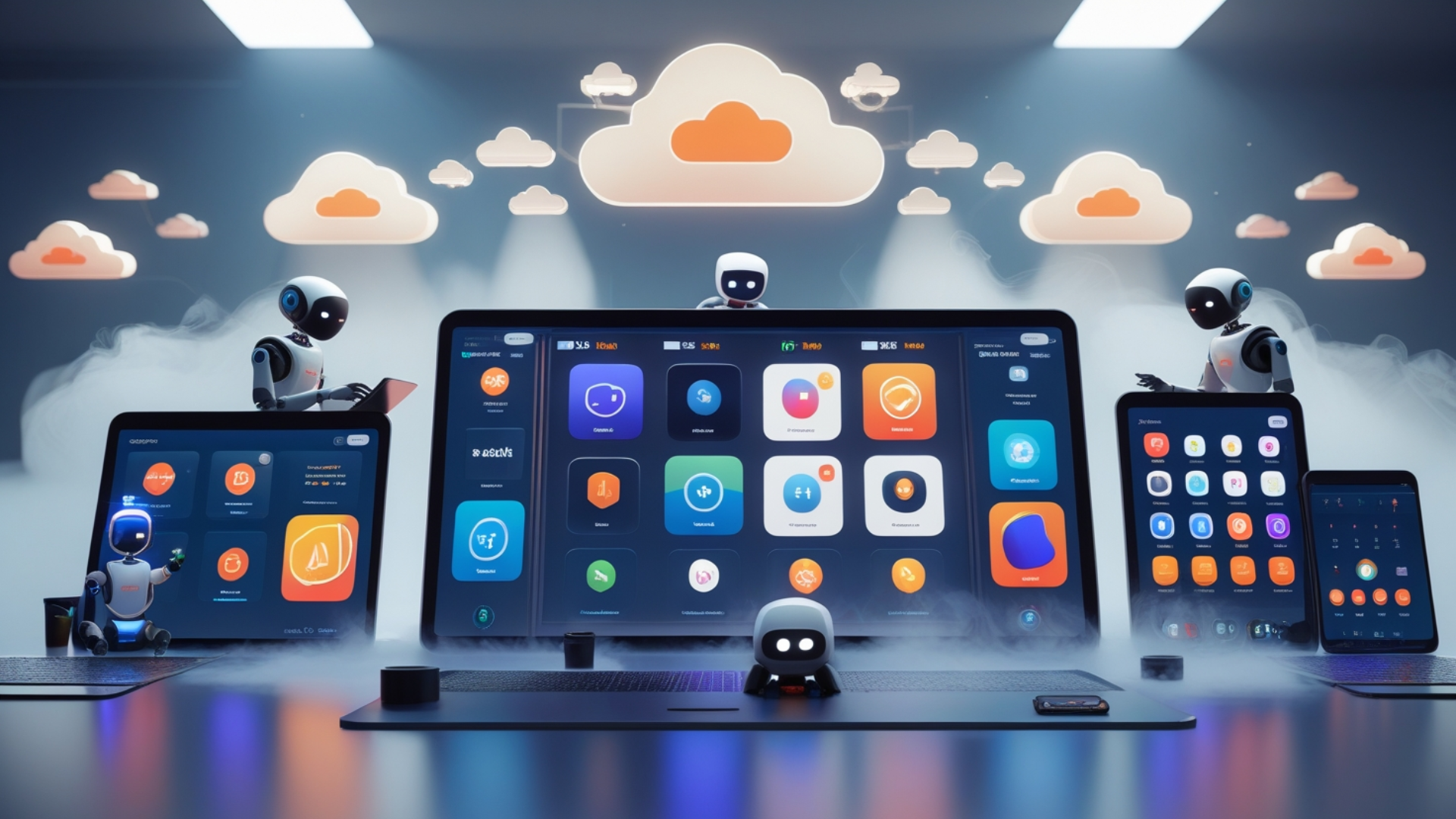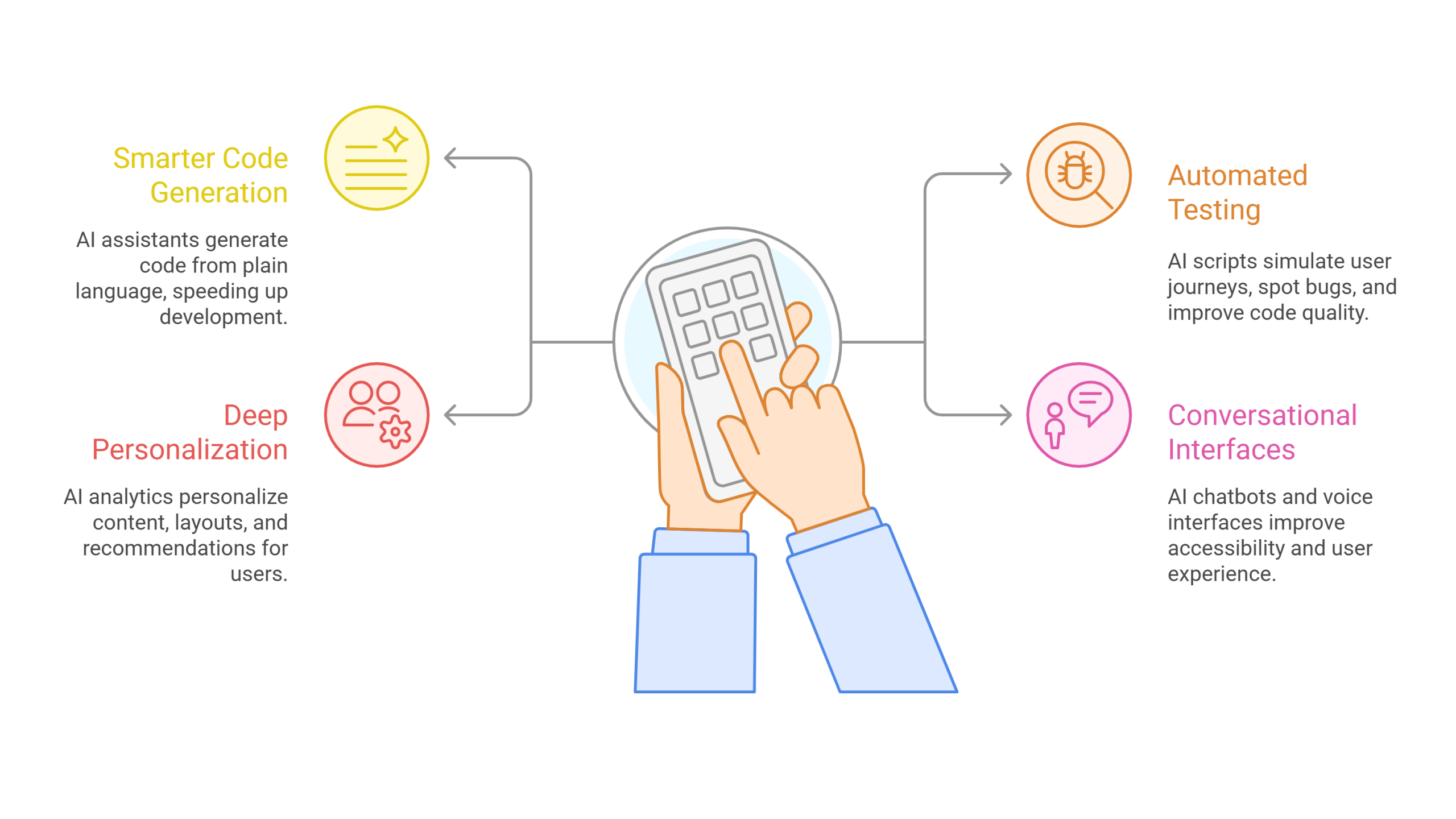
In today’s tech ecosystem, AI and Cloud Are Transforming Cross-Platform Development is more than just a trending topic; it is a shift that is redefining how developers and businesses approach app creation. As user expectations soar and device diversity expands, companies must adopt strategies that keep them ahead. To meet these new demands, artificial intelligence (AI) and cloud computing have joined forces, making it possible to deliver rich, seamless experiences anywhere, at any time, and on any device.
Why AI and Cloud Are Transforming Cross-Platform Development Matters
Traditionally, developers faced tough choices between reach, quality, and resource constraints. Maintaining separate codebases for every platform was costly and often led to delays. However, with the convergence of AI and cloud—fueled by ever-improving frameworks—businesses now code once, deploy anywhere, and manage assets centrally. Furthermore, users benefit from smoother, more intelligent interactions, while businesses save both time and money.
The Foundations: What Makes Cross-Platform Development Evolve?
Unified Codebase—A Core Principle
The first step toward modern efficiency is the unified codebase. With frameworks such as Flutter, React Native, and .NET MAUI, teams focus on a single set of code that powers Android, iOS, desktop, and web apps alike. As a result, updates, bug fixes, and feature rollouts become both faster and more consistent. In addition, AI assists in translating requirements into concrete code elements, filling gaps that would otherwise require manual intervention.
The Role of AI: From Automation to Personalization
Smarter Code Generation
AI-powered development assistants, such as GitHub Copilot and Tabnine, allow teams to describe features in plain language and immediately receive functional code suggestions. Consequently, prototyping and iteration speed up, letting both designers and engineers remain focused on value rather than repetition. Machine learning continuously suggests improvements, adapting code across platforms and optimizing for best practices.
Automated Testing and Debugging
Manual testing on dozens of devices can overwhelm even the most experienced QA teams. Thankfully, AI scripts now simulate user journeys, spot bugs, and check for compatibility issues across environments. These intelligent systems highlight vulnerabilities, improve code quality, and cut down release cycles. Because AI learns from every test run, its future suggestions become more precise and helpful.
Deep Personalization
AI-driven analytics empower apps to serve dynamic content, personalize layouts, and offer recommendations bespoke to user preferences. As users interact with the app, algorithms adapt flows, notifications, and even colors for individual needs. Therefore, engagement and satisfaction rise across every platform.
Conversational Interfaces and Vision
On top of that, integrating AI-powered chatbots and voice interfaces ensures user accessibility anywhere. Whether typing on desktop, tapping on mobile, or speaking through a wearable, natural language engines break barriers and connect users to features instantly. In parallel, computer vision enables AR, image recognition, and smart content suggestions, making apps both interactive and context-aware.
The Cloud: Foundation for Scale, Security, and Velocity

Consistent Cloud Backends
Cloud services consolidate data storage, authentication, and application logic in one place. No matter the device, users always access their own data, preferences, and content. This centralization simplifies scaling; whether for a sudden influx of traffic or global expansion, the cloud adjusts instantly and invisibly to the end user.
Real-Time Processing and Collaboration
Cloud infrastructure makes real-time chat, multiplayer gaming, live collaboration, and push notifications reliable and fast. Through edge computing and regional data centers, latency drops dramatically, so users experience true immediacy whether they are down the street or across the globe.
Effortless Updates and Feature Flags
Gone are the days of waiting for app store reviews. With cloud-based configuration and modular deployments, teams remotely toggle features, patch bugs, and update content. Therefore, apps evolve in real time, delighting users while minimizing disruption.
Serverless and Microservices
Cloud providers enable serverless deployment, where functions are automatically scaled and managed. Microservices architecture divides logic into loosely coupled pieces, ensuring updates or failures never take down the entire app. These paradigms, fully managed in the cloud, let small teams act like giants, rolling out global services with a lean, efficient approach.
Built-in Compliance and Security
From the outset, the leading cloud platforms offer encryption, role-based access, constant monitoring, and compliance with major regulations like GDPR. Combined with AI security tools that detect threats in real time, data remains secure, and users’ trust is preserved regardless of device or geography.
How AI and Cloud Power Real-World Cross-Platform Solutions
Dynamic E-Commerce
A retailer aims to deliver unified shopping, cart, and loyalty experiences across web, iOS, Android, and even kiosks. AI analyzes shopping history to recommend products personally, while chatbots help users instantly, no matter the platform. Meanwhile, the cloud stores inventory, syncs customer accounts, and enables one-click checkouts—even during flash sales with massive traffic spikes. The outcome is consistent, delightful, and sales-boosting on every device.
Fitness and Wellness Apps
A fitness startup leverages AI to craft individualized workout and nutrition plans, monitoring progress and providing automated feedback. While the user may start a session on their phone, they finish tracking on a smartwatch, and review data via web dashboard. Cloud-powered analytics keep everything in sync, while notifications adapt based on the user’s goals, mood, and recent achievements.
EdTech and Remote Learning
Cross-platform EdTech apps let students switch between tablet, desktop, and smartphone—never losing their place. AI tutors guide struggling students with personalized hints and review routines, while the cloud hosts collaborative whiteboards, classroom video sessions, and secure submissions. Because of this, learning is continuous, flexible, and adapted to each learner’s journey.
Implementation Roadmap: Bringing Modern Development to Your Organization
1. Set a Focus Keyphrase and Consistent Branding
For SEO and discoverability, always begin your content and meta elements with a clear focus keyphrase, like “How AI and Cloud Are Transforming Cross-Platform Development.” Use it naturally in your introduction, headings, descriptions, and slug.
2. Map User Journeys
Identify where cross-platform consistency, intelligent personalization, and real-time collaboration add most value. Keep surveys and analytics in the planning process to drive decision-making.
3. Choose Future-Ready Tech
Pick frameworks that embrace modularity, community support, and AI/cloud integrations—such as Flutter, React Native, Node.js, and Unity for specific applications.
4. Integrate AI and Cloud Early
Lay the groundwork for AI-powered automation, auto-scaling, and serverless deployment from day one. Use managed APIs for core services (auth, payments, notifications), and dedicate effort to training unique, valuable AI models for key features.
5. Test for All Users
Run automated and manual tests on every platform you plan to support. Employ AI-based QA tools and real-user beta groups to surface issues that basic emulation might miss.
6. Iterate, Analyze, and Refine
After launch, gather both qualitative reviews and quantitative data. Use cloud-powered dashboards and machine learning to spot trends, weaknesses, and emerging needs.
Addressing Challenges and Common Concerns
Overcoming Performance Pitfalls
Although cross-platform frameworks have matured, optimizing assets (images, sounds, code) for each device and using cloud-backed logic ensures snappy performance worldwide. AI helps by identifying and resolving bottlenecks before users even notice them.
Handling Fragmented Devices and User Environments
Through adaptive layouts, responsive design, and cloud-based configuration, you ensure users get a tailored experience, whether they’re on a budget phone or the latest foldable tablet. Feature detection and dynamic updates mean no one is left behind.
Privacy and Transparency
Respecting user data is non-negotiable. Clearly inform users whenever camera, microphone, or location data will be collected. Use strong encryption, honor opt-out preferences, and make privacy controls accessible at all times.
Trends and The Future of Cross-Platform Development with AI and Cloud
No-Code/Low-Code Democratization
Thanks to drag-and-drop builders, AI-guided assistants, and cloud-based workflows, business users and designers are directly participating in app creation. This shortens development cycles and fosters rapid innovation.
Multi-Platform, Multi-Device Seamlessness
Apps are no longer tied to single devices; instead, sessions and experiences flow across phones, tablets, desktops, wearables, and even VR/AR environments. Cloud-powered backends and AI-driven UIs adapt content and function instantly to suit each device.
Hyper-Personalization and Smart Automation
Expect AI to suggest features, automate troubleshooting, optimize performance, and even anticipate user needs—creating stickier, more valuable apps for every individual.
Conclusion: AI and Cloud Are Reshaping App Development Forever
How AI and cloud are transforming cross-platform development reveals a brighter, more agile future for creators and users alike. By working together, these two powerful forces eliminate old technical burdens and enable extraordinary new possibilities. Teams no longer face choices between reach, quality, and performance. Instead, users across the world will benefit from richer, more unified, and genuinely intelligent digital experiences—powered by technology designed for their ever-changing, always connected lives.
Frequently Asked Questions
Can small teams succeed with AI and cloud-powered cross-platform apps?
Absolutely! Managed services democratize technology, letting startups launch global-quality apps with minimal infrastructure or DevOps headaches.
Are there any limitations to cross-platform approaches?
While most use-cases are well supported, highly specialized apps (needing direct hardware access or maximum speed) still benefit from native builds. However, this gap shrinks each year.
How does AI affect user data privacy?
When implemented ethically, AI respects privacy by processing data securely and giving users control. Always inform users and comply with modern data standards such as GDPR.
What’s the main future trend to watch?
The rise of context-aware apps that move seamlessly across every platform—leveraging AI for smarter features, and the cloud for limitless scale and uptime.
